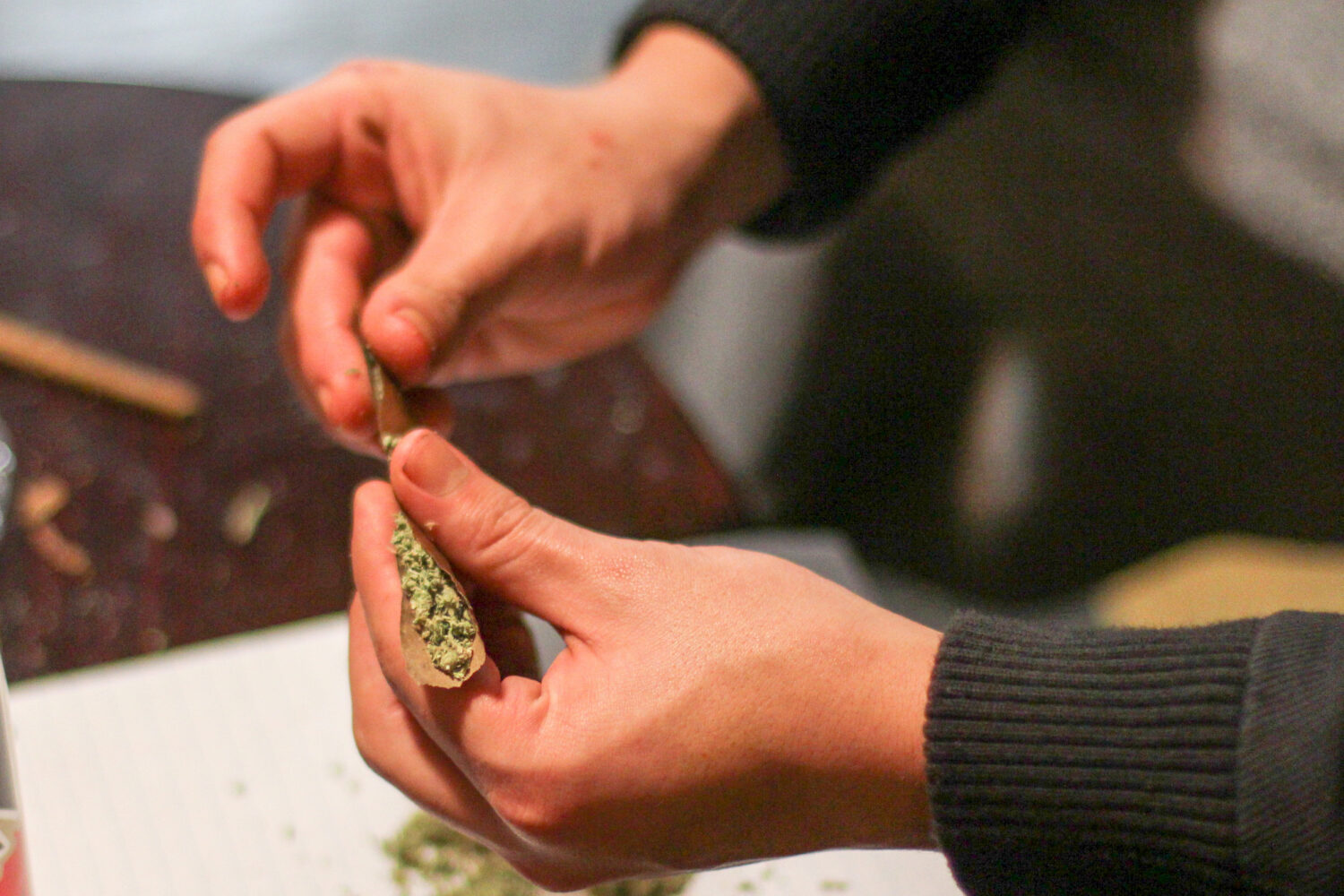Even as more states have moved to legalize marijuana, rates of current and lifetime cannabis use among high school students have continued to drop, newly released federal data shows.
The Centers for Disease Control and Prevention’s (CDC) Youth Risk Behavior Survey (YRBS), published last week, found that teen use of all monitored substances—including marijuana, alcohol and prescription drugs—has “decreased linearly” over the past decade.
When it comes to cannabis, what’s especially notable is that the federal study shows high school student use was trending up from 2009-2013—before legal marijuana dispensaries started opening—but has been generally on the decline since then. The first state recreational legalization laws were approved by voters in 2012, with regulated retail sales beginning in 2014.
The latest data from the biennial survey shows that 15.8 percent of high school students reported using marijuana at least once in the past 30 days in 2021—down from 21.7 percent in 2009 and significantly lower than the record high of 23.4 percent in 2013.
Health officials have been encouraged by the trend, though they’ve pointed out that social isolation policies resulting from the coronavirus pandemic likely played a role in the extent to which substance misuse declined among youth in the most recent two-year period measured.
Still, the overall trend conflicts with one of the most common prohibitionist arguments against marijuana legalization. Despite their claims that legalizing cannabis for adults would drive up teen usage, studies and surveys—including those conducted or funded by the federal government—have repeatedly shown otherwise.
In fact, according to the YRBS survey, high school cannabis consumption was at its highest point in the years studies before any state had opened marijuana retailers for adults. And in the years since, as more and more markets have come online, fewer youth say they’re using cannabis.
Teens are also reporting lower rates of lifetime marijuana consumption. In 2021, 27.8 percent of teens said they’ve used cannabis at least once in their lifetime, a nearly 10 percentage point drop from 2019 when the rate was 36.8 percent.
Again, the peak lifetime use for marijuana was in 2013 (40.7 percent), before any states had opened adult-use cannabis retailers.
“Youth substance use has declined over the past decade, including during the COVID-19 pandemic,” a supplementary report from CDC says, “however, substance use remains common among U.S. high school students, and continued monitoring is important in the context of the changing marketplaces for alcohol beverage products and other drugs.”
“Scaling-up tailored, evidence-based policies, programs, and practices to reduce factors that contribute to risk for adolescent substance use and promote factors that protect against risk might help build on recent declines,” it says.
While COVID likely contributed to the abrupt decline in cannabis and other substance use measured in 2021, the marijuana trends have been consistent over the course of the reform movement.
Last year, for example, a National Institute on Drug Abuse- (NIDA) funded study that was published in the American Journal of Preventive Medicine found that state-level cannabis legalization is not associated with increased youth use.
The study demonstrated that “youth who spent more of their adolescence under legalization were no more or less likely to have used cannabis at age 15 years than adolescents who spent little or no time under legalization.”
Yet another federally funded study from Michigan State University researchers that was published in the journal PLOS One last summer found that “cannabis retail sales might be followed by the increased occurrence of cannabis onsets for older adults” in legal states, “but not for underage persons who cannot buy cannabis products in a retail outlet.”
Meanwhile, adolescent marijuana use in Colorado declined significantly in 2021, according to the latest version of a biennial state survey released last year.
A study out of California last year found that “there was 100 percent compliance with the ID policy to keep underage patrons from purchasing marijuana directly from licensed outlets.”
The Coalition for Cannabis Policy, Education, and Regulation (CPEAR), an alcohol and tobacco industry-backed marijuana policy group, also released a report last year analyzing data on youth marijuana use rates amid the state-level legalization movement.
Another federally funded study, the National Survey on Drug Use and Health (NSDUH), was released in October showing that youth marijuana use dropped in 2020 amid the coronavirus pandemic and as more states moved to enact legalization.
Further, an analysis published by the Journal of the American Medical Association in 2021 year found that enacting legalization has an overall impact on adolescent cannabis consumption that is “statistically indistinguishable from zero.”
The U.S. Department of Education’s National Center for Education Statistics also analyzed youth surveys of high school students from 2009 to 2019 and concluded that there’s been “no measurable difference” in the percentage of those in grades 9-12 who reported consuming cannabis at least once in the past 30 days.
There was “no change” in the rate of current cannabis use among high school students from 2009-2019, an earlier CDC survey found. When analyzed using a quadratic change model, however, lifetime marijuana consumption decreased during that period.
Another study released by Colorado officials in 2020 showed that youth cannabis consumption in the state “has not significantly changed since legalization” in 2012, though methods of consumption are diversifying. (Full Story)

